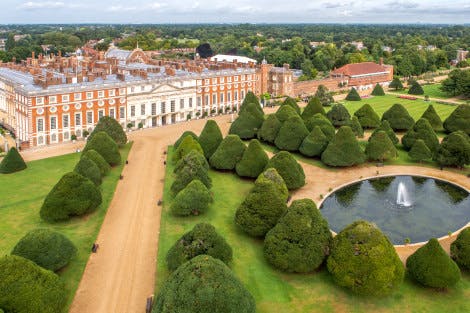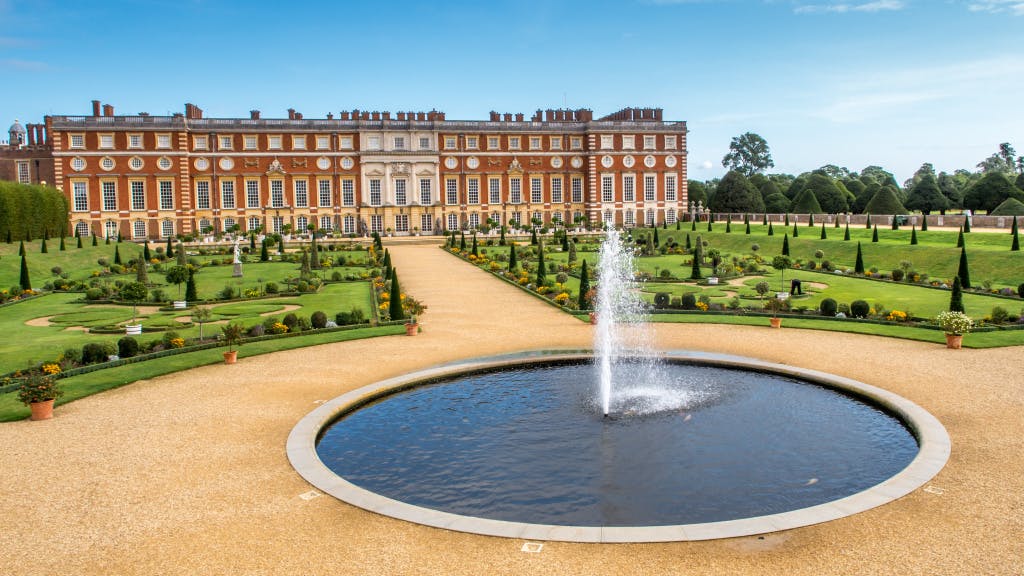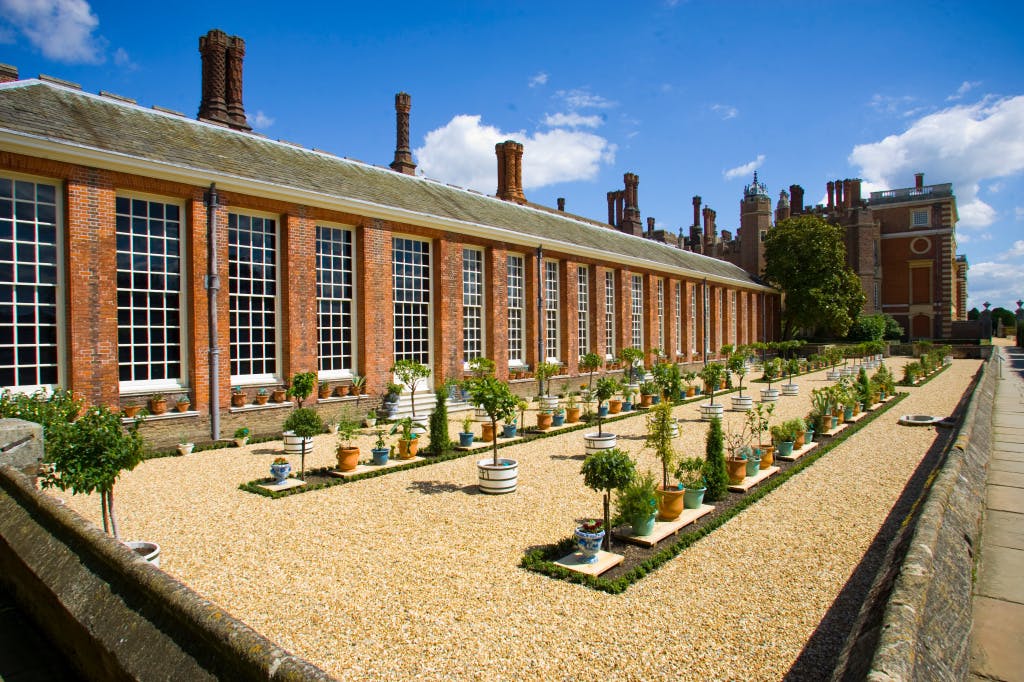Responding to Climate Change in the Hampton Court Gardens
Date: 29 March 2024
Author: Graham Dillamore
From the sunken Tudor Pond Gardens to the vast baroque masterpieces on the East Front and the Victorian Maze, change in the gardens is part of Hampton Court Palace’s 500-year history. But as our climate changes, so do our gardens.
Here, Graham Dillamore, Head Gardener at Hampton Court Palace and Kensington Palace, shares how his team are adapting to these challenges.
Life as a gardener has perhaps never been as challenging as it is now. In some ways, a gardener’s perspective and understanding of the serious and global climatic changes affecting our landscapes is more advanced than most other occupations. The loss of insect life and decline in bird populations are just two of the more obvious concerns, and circumstances have changed dramatically in my 45-year gardening career.

Image: The scale of the Hampton Court Gardens is best seen from above. © Historic Royal Palaces / High Level Photography Limited
Historic Gardens, Historic Changes
The Hampton Court Gardens have evolved, developed and matured over hundreds of years – probably more so than any other formal gardens in the UK. The historical alterations were sometimes driven by changes in monarch who wanted to leave their mark, or responses to visitor demands and desires.
In the past 30 years, we have restored and recreated areas of the gardens that were lost or forgotten. This gave us ground-breaking projects such as the Privy Garden and Orangery Garden. There appeared to be no other reasons for significant change, until now.
The Challenge Ahead
Hampton Court Gardens, like every other garden, encompass the interconnected relationships between plants, animals, microorganisms, and the environment and are subject to the same climatic changes and loss of biodiversity as everywhere else. This decline pays no respect to royal status or length of service; it is perhaps the larger formal gardens like ours that are hit hardest, or where it’s most noticeable.
Our 35 formal flower beds, two miles of box hedging and five acres of fine lawns – all sitting on free-draining river gravel – present us with a challenge, especially during unexpected long scorching dry periods. Adding to the gardeners’ woes are the ever-increasing range of ruthless pests and diseases we’ve never seen in the UK before. None of these issues are secret or private so it feels like a good time to share the trials and tests ahead; our gardens, along with thousands of others, have to adapt and start coping.
Time for Change: Our Plans for 2024
Over the past few years, we have made several small adaptations and adjustments. The frequency of these changes will increase over the coming years as we seek to be more sustainable and resilient. We won’t lose the spectacular and colourful displays that our visitors love or de-formalise our historic baroque layout but we can achieve the same impact with a slight adjustment to the plant content in some of the areas.
A New Pond Garden
Supplying over 10,000 summer annuals, 15,000 bulbs and 10,000 spring bedding plants isn’t easy and uses a lot of our resources. The constant turning of the soil, the waste and the need to irrigate everything have made us want to be less dependent on bedding plants.
So we have spent the winter planting the upper level of the Pond Garden with hardy tropical palms, interesting foliage, topiary and flowering shrubs. This new approach will give us a new look but be more sustainable. It will still be colourful, but in a different way.
East Front Flower Beds
On the baroque East Front, vast numbers of bedding plants and resources are needed here to keep things going year after year. Instead, we’re trialling using colourful perennials (that stay in the ground through winter) to achieve a similar look, while also helping to reduce wastage and leave us less dependent on irrigation and fossil fuels to produce the bedding plants.

Image: Graham in the gardens with two Historic Royal Palaces members. © Historic Royal Palaces
The Way Forward
These are just two new initiatives we’re working on at the moment but we are also doing much more generally to adapt and to create better habitats for our biodiversity. A little less grass-cutting here and there, building dead hedge havens for birds and switching to battery-powered equipment are just a few actions we have taken; going forward, we have plans to reduce our fossil fuel dependency even more.
Every plant we plant, decision we make and step we take is made with a new energy and a set of new principles. Doing nothing isn’t an option.
Support our work and get involved

Become a member
Join as a member and enjoy unlimited adventures with free entry to our palaces and gardens, as often as you like.
More from our blog

Wren's Royal Palace
08 March 2023
Head of Historic Buildings Daniel Jackson looks at one of Sir Christopher Wren's most famous and problematic projects: the remodelling of Hampton Court Palace.

Mistletoe in the Hampton Court Palace Gardens
20 December 2019
One of the most popular questions posed to our gardeners during winter concerns strange lumps of weed growing in trees in the East Front garden. These random and odd-looking growths are in fact clumps of mistletoe.

Royal Trees at Hillsborough Castle and Gardens
31 May 2023
Claire Woods, Gardens Manager at Hillsborough Castle and Gardens, reflects on some of the trees planted by members of the Royal Family, which are still available to view in the castle grounds today, and the newest addition for 2023.


